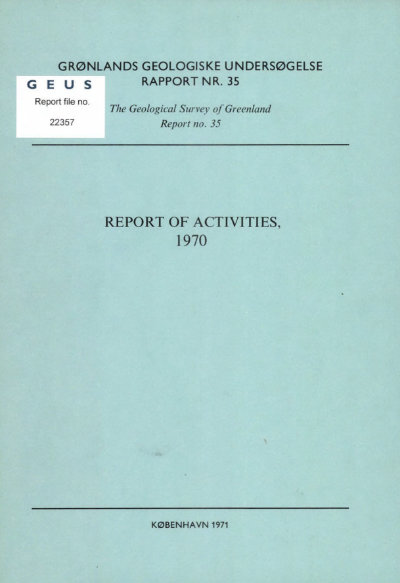An investigation of the igneous rocks on Hareøen and western Nûgssuaq, West Greenland
DOI:
https://doi.org/10.34194/rapggu.v35.7251Abstract
Hareøen is an island north-west of Disko in western Greenland. It has the form of a plateau, whose highest point - 512 metres - is found near the south coast. Like the neighbouring parts of Nugssuaq and Disko, Hareøen consists chiefly of Tertiary basaltic lavas. The island first attracted attention on account of the presence of interbasaltic, coal-bearing sediments on the north-east coast. These were already examined by Giesecke in 1811 (Giesecke, 1910) and later among others by Steenstrup (1874) and B.E. Koch (1959). A petrographie investigation of the basalts was first undertaken by Holmes (1919), who described loose fragments rich in K2O. Lavas from the south coast, colleeted and analysed by Pedersen (1970), also have a high content of potash. V. Miinther in the years 1948-49 untertook geological mapping of the island, on which the present investigation is supported (Miinther, in press).
Downloads
Published
Issue
Section
License
This article is distributed under a CC-BY 4.0 licence, permitting free redistribution and reproduction for any purpose, even commercial, provided proper citation of the original work. Author(s) retain copyright over the article contents.


